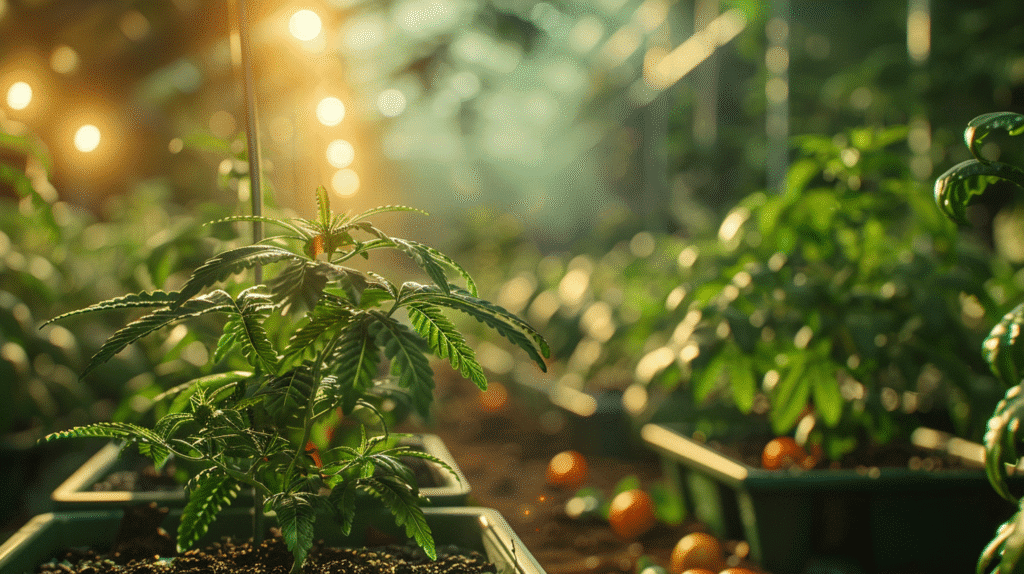Nepal’s Legal Cannabis Proposal

Gandaki Province in Nepal has released a draft bill to legalize cannabis growing under a state-controlled pharmaceutical-type system that maintains control of the supply chain by the government.
Nepali nationals only would be eligible for cultivation license, and foreign joint ventures would be allowed only if the Nepali side owns a minimum of 51% of the investment. Licenses would be revoked if anyone under the age of 18 is included.
Licensed sales would be controlled by a new Cannabis Board and pharmaceutical manufacturers, with the goal of reducing diversion and directing production into the medical and industrial markets.
The proposal also lists heavy fiscal requirements: investment requirements of varying amounts and substantial processing, analysis testing, and domestic purchase-and-sale permits fees.
The plan is being presented as farm-friendly diversification with protections by proponents, while opponents worry that the significant capital requirements will put off potential proprietors.
But the bill is a sign of an end-to-end, rules-first plan and not a bare-bones pilot—and would produce Gandaki Nepal’s most complete provincial map for legal cannabis if it becomes law.
Source: risingnepaldaily.com
‘Gateway to Gardening’: Poll Finds Cannabis Growers Plant Tomatoes

A new survey busts the classic “gateway herb” misconception.
Polling 1,327 home cannabis cultivators, scientists discovered that 66% of them reported growing cannabis had encouraged them to begin growing tomatoes.
Just over a fourth of them confessed they never ate tomatoes until years following first growing cannabis—it being assumed that with all one has learned about how to handle lighting, nutrients, pruning back and pest control for cannabis these very same abilities apply very nicely come kitchen garden.
The trend also promises culture shift. Legalization has done more than ushered in acceptance of use; it’s ushered in new gardening skills.
Survey responses branched naturally out of tomatoes into basil, chilis, strawberries, cucumbers, and lettuce—the usual benchmark crops requiring the same everyday labor as cannabis: sowing seeds, control of air, scheduling of water, and control of ripening.
That is, the “gateway” appears more of a push into gardening than into degeneracy.
The survey was taken on behalf of Homegrown Cannabis Co., it’s not subject to peer review, and details of method are scarce—so we must read these results as illustrative and not final.
But the findings concur with common sense and other talk from home growers: having already spent money on a tent, lights, timers, and amateur IPM chops, topping it all off with a tray of tomato seedlings is a low-barrier follow-through.
For policymakers and doubters, the implication is moderate but real: home-cultivated cannabis can grow something else back home— better gardening skills!
Source: marijuanamoment.net
Cannabis & Healthy Aging: Promise, But Thin Human Data

The Journal of Cannabis Research 29 Jul 2025 contains a systematic review of 24 cannabinoid and lifespan/aging studies and concludes cautiously optimistic—but resolute in the view that strong clinical guidance is premature. Eighteen studies examined aging/lifespan specifically: 11 in an animal model and seven in humans.
Preclinical studies connect low-dose THC and CBD with enhanced cognition, sleep, inflammation, social behaviors, and even lifespan in certain models.
But human data come as fixed and unpredictable amounts: dosing is poorly standardized, “older adult” cutpoints vary, and results don’t translate between studies so comparisons are difficult.
Discussion covers potential mechanisms—even endocannabinoid involvement in homeostasis, neuroinflammation, mitochondrial activity, and stress response—shared between the aging hallmarks.
These require randomized trials of standard dosage and forms and longitudinal cohorts of lifelong users and late-life initiators. Until then, clinicians will have to deal with hopes for symptomatic relief and go on a case-by-case basis until higher-quality data become available.
Source: biomedcentral.com
Vaporized THC+CBD Eases Acute Migraine in First RCT

In the first randomized, double-blind, placebo-controlled, crossover study specifically aimed at determining the impact of vaporized cannabis on acute migraine, a set of adult subjects received treatment for as many as four different migraine attacks.
In this broad study, each subject had one attack treated with vaporized cannabis with 6% THC, another attack treated with cannabis that consisted of 11% CBD, another attack treated with a combination of 6% THC and 11% CBD, and lastly, one attack that was treated with a placebo.
The blend of THC and CBD showed a significantly higher efficiency than the placebo at the two-hour time point in relieving pain, experiencing pain freedom, and relieving the most annoying symptom felt by subjects.
In addition, the effect of this blend remained for an extended period of time up until 24 to 48 hours post-administration.
THC alone exhibited benefit on some outcomes but failed to improve all of them while CBD administered alone failed to perform better than a placebo on the primary measures of evaluation.
From a clinical perspective, the data show that there does exist a potentially final-line therapy available for those patients not experiencing success with typical therapies.
Yet there also exist a number of significant questions remaining as far as determining the proper dosing frequency, the risk of medication-overuse headaches, and how best to choose those patients best suited for this option.
As always, the regulatory framework and the oversight offered by physicians will have a major effect on the actual application and uptake in everyday practice.
Source: medscape.com
France to Integrate Medical Cannabis Into Standard Care

France is making great strides and meeting crucial milestones by introducing a permanent medical cannabis program, which will be incorporated into its current pharmaceutical system.
In March of the year 2025, three draft texts on this groundbreaking program were presented formally to the European Union for their full review and discussion.
After a lengthy TRIS review process, where these documents were thoroughly vetted, they have now been sent to the Conseil d’État, where they are undergoing a detailed legal review.
After this thorough review process is finished, the texts will be finalized and made ready for ministerial signing, after which they will be printed in the Journal Officiel.
At the same time, the Haute Autorité de Santé, or HAS as it is more frequently abbreviated, embarked on a widespread consultation process centered on issues of pricing policy, methods of reimbursement, and prescriber training programs.
Initial access will be tightly scoped to last-line indications: refractory neuropathic pain, drug-resistant epilepsy, painful spasticity, cancer-related symptoms, and advanced palliative care.
Firstly, there is the fact that raw cannabis flower will only be used in airtight containers that have been designed with the intent of vaporization.
Meanwhile, oils and capsules will become the preferred options for product delivery using pharmacy outlets.
Source: cannabishealthnews.co.uk


